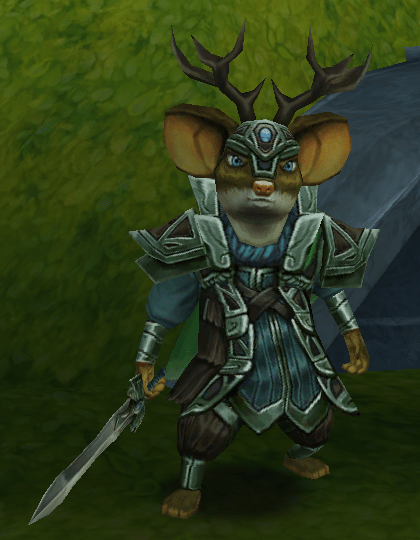Dorian BrightEyes – “Total Eclipse of the Heart” by Bonnie Tyler and Dr. Strangelove or: How I Learned to Stop Worrying and Love the Bomb
https://www.wizard101central.com/wiki/NPC:Dorian_BrightEyes
https://www.wizard101central.com/wiki/Quest:How_I_Learned_to_Stop_Worrying
https://en.wikipedia.org/wiki/Total_Eclipse_of_the_Heart
https://en.wikipedia.org/wiki/Dr._Strangelove
https://youtu.be/lcOxhH8N3Bo
Dorian BrightEyes is the nephew of Elizar Fireblade. Dorian is ordered to travel from the Last Wood to the Tyrian Gorge with the goal of turning the Umbra Legion’s own weapons against them. He needs your help procuring a Dragnfly mount and some Kermes Fire to facilitate the destruction of the Honeycmomb Wall.
Dorian’s name seems to be a riff on the repeated line from the song, “Total Eclipse of the Heart” ‘Turn around, bright eyes’. The quest name that starts the whole sequence is taken from the movie’s title.
“Total Eclipse of the Heart” is a song recorded by Welsh singer Bonnie Tyler. It was written and produced by Jim Steinman, and released on Tyler’s fifth studio album, Faster Than the Speed of Night (1983). The song was released as a single by CBS/Columbia in 1983.
The song became Tyler’s biggest career hit, topping the UK Singles Chart, and becoming the fifth-best-selling single in 1983 in the United Kingdom. In the United States, the single spent four weeks at the top of the charts, keeping another Steinman penned song “Making Love Out of Nothing at All” by Air Supply from reaching the top spot (a song Tyler would later cover in 1995), and it was Billboard’s number-six song of the year for 1983. The song was nominated for the Grammy Award for Best Female Pop Vocal Performance.
Worldwide, the single has sales in excess of 6 million copies and was certified gold by the Recording Industry Association of America (RIAA) for sales of over 1 million copies after its release, updated to platinum in 2001 when the certification threshold changed. In 2015, the song was voted by the British public as the nation’s third favourite 1980s number one in a poll for ITV.
Dr. Strangelove or: How I Learned to Stop Worrying and Love the Bomb, known simply and more commonly as Dr. Strangelove, is a 1964 black comedy film directed, co-written, and produced by Stanley Kubrick and starring Peter Sellers in three roles, including the title character. The film also stars George C. Scott with Sterling Hayden, Keenan Wynn, Slim Pickens, and Tracy Reed. The film, which satirizes the Cold War fears of a nuclear conflict between the Soviet Union and the United States, is loosely based on the thriller novel Red Alert (1958) by Peter George, who also co-wrote the screenplay with Kubrick and Terry Southern.
The story concerns an unhinged United States Air Force general who orders a pre-emptive nuclear attack on the Soviet Union. It separately follows the President of the United States, his advisors, the Joint Chiefs of Staff and a Royal Air Force exchange officer as they attempt to prevent the crew of a B-52 (following orders from the general) from bombing the Soviet Union and starting a nuclear war.
The film is often considered one of the best comedies ever made and one of the greatest films of all time. In 1998, the American Film Institute ranked it twenty-sixth in its list of the best American movies (in the 2007 edition, the film ranked thirty-ninth), and in 2000, it was listed as number three on its list of the funniest American films. In 1989, the United States Library of Congress included Dr. Strangelove as one of the first 25 films selected for preservation in the National Film Registry for being “culturally, historically, or aesthetically significant”.[7][8] The film received four Academy Award nominations, including Best Picture, Best Director, Best Adapted Screenplay, and Best Actor for Sellers. The film was also nominated for seven BAFTA Film Awards, winning Best Film From Any Source, Best British Film, and Best Art Direction (Black and White), and it also won the Hugo Award for Best Dramatic Presentation.
The current list of all the (known) Khrysalis references can be found here.
Although I am well versed in Pop Culture references but I do not claim to have caught them all. Let me know your favorites in the comments and if I’ve missed one you caught, let me know so I can add it to the list.
Text for this article is excerpted from the linked wiki pages
Dorian BrightEyes image is from Wizard101, and is copyright of KingsIsle Entertainment
Total Eclipse of the Heart cover art is copyright CBS/Columbia Records
Dr Strangelove movie poster is copyright Columbia Pictures
Image usage qualifies as fair use under US copyright law.


